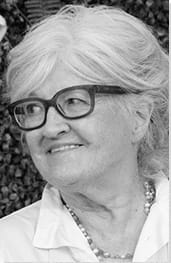Summary of Vija Celmins
Celmins's name has an elevated standing within the contemporary art world. Celmins has built her reputation largely on a series of exquisitely intricate and hypnotic copies - painted, drawn or sculpted - of oceans, deserts, rocks, spider webs, views of the night sky, warplanes, and everyday household objects. Drawing on materials sourced from newspapers, magazines and books, on found objects, and on her own photographs, she has talked about her art in terms of "redescriptions" that invite her audience to consider overlaps between concepts of "fact, fiction and invention". For Celmins, moreover, meaning resides very much in the material properties of her artworks.
Accomplishments
- Many of Celmins's works prompt questions around representation, perception and human experience. For example, through her "all-over" compositions of waves and celestial views - that is, views without horizons, borders or other reference points - she asks her viewer to focus on the complexity and wonder of their natural surroundings.
- Celmins's early works drew on press photographs showing images of war and gun violence. By rendering her images through a monochrome grayscale technique, she reproduced the print quality of low-grade newsprint. Like Gerhard Richter (critics and historians liken the work of the two artists), these paintings draw out attention to the complex relationship between photography and the objective truth of what is represented.
- Celmins's set out to "redescribe" an existing object by displaying it next to her meticulously studied simulacrum. Through her iconic "rock sculptures" (To Fix the Image in Memory 1977-82) she painted bronze casts of the original rocks in such a way that her viewer is challenged to distinguish between the two, and to then, perhaps, contemplate parallel realities between art and the natural world.
- Celmins produced a series of photorealist paintings of objects from everyday life such as heaters, typewriters, lamps, and hot-plates. She referred to these pieces as "specimens" (in the sense that they were "parts of a species") of household items. Isolated against dull blank backgrounds, these minimalist images carry the (acknowledged) influence of Giorgio Morandi, and the somber color schemes of Velazquez.
The Life of Vija Celmins
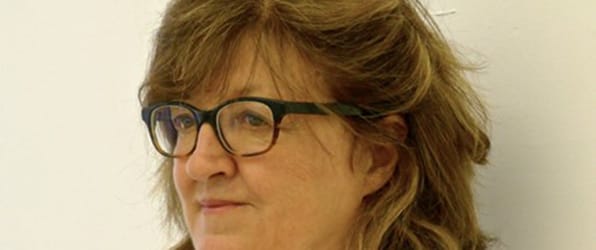
Art critic Roberta Smith comments that although "[Celmins' work] is aligned with Pop, Minimal and Conceptual Art - and even Photo Realism - and has perceptible debts to Jasper Johns, Andy Warhol and Giorgio Morandi, it has always stood alone, outside stylistic factions, and stubbornly at odds with her influences".
Important Art by Vija Celmins
Heater
Heater belongs to a series of works, made while Celmins was still a graduate student at UCLA, which present everyday objects (such as typewriters and lamps), always at life size, and isolated against a gray-brown background. In this painting, an electric heater stands alone against just such a background. The heater's power cord trails off to the left, disappearing out of frame, where it is evidently plugged in, as the heater burns orange with heat. It suggests real space (in the inclusion of faint shadow directly below the heater) while at the same time presenting an image that becomes intangible the further one's gaze drifts from the center of the frame. The painting carries echoes of the minimalism of Giorgio Morandi, and the muted color schemes of Velasquez.
Art historian Frances Jacobus-Parker asks of the images in this early series (and of Heater in particular): "Are the resulting images [...] cozy and inviting? Are they ominous? Threatening? Funny? Absurd? Perhaps just boring? This issue seems to have perplexed early reviewers of Celmins' works, in no small part because these object still lives were often exhibited alongside her paintings which depicted a gun with a hand and other violence-related subjects". Jacobus-Parker explains that Celmins herself refers to these "straightforward" images as "'specimens', as though each one represented an example of species of household items".
Celmins's object images (like Heater) fit loosely into American post-war movements like Pop Art, AKA "New Realism" or "common object painting", which blossomed in both Los Angeles and New York in the 1960s. Yet, as Jacobus-Parker notes, they also differ from "common trends" in these movements (exemplified by artists like Warhol and Lichtenstein), in that they are more autobiographical. He writes, "[these works] do not use paint to mimic the appearance or processes of mechanically-produced images [and] her subjects are not derived from mechanically-produced mass-media images and ads. [...] In contrast with gleaming appliances signifying post-war domestic prosperity, Celmins' visual catalogue of the appliances and meals that sustain her attest to the solitary and modest existence of a specific individual".
Oil on canvas - Whitney Museum of American Art, New York
Suspended Plane
Celmins began painting images that evoked ideas of war and violence based on photographs she found in newspapers. Some of these were of handguns being fired, others of bullet-riddled cars, and others of war planes (some American, some Japanese, and some German). Arts writer Sarah Manguso has noted that, through their grayscale quality, "The paintings preserve the newspapers' printing errors and other artefacts as dots and lines and smudges, which defangs and distracts from the horrors of war".
This was the era of the Vietnam War (indeed, Celmins was vocal participant in student anti-war marches) but, as the artist herself explained, "I had an early life that was quite traumatic, as did everybody who lived in Europe during World War II [and] I had gone through some experiences which must have [...] stayed in my little body there and kind of came out when I was like searching for images, searching for little tones that I could hit, searching for someplace to connect". She continued, "I collected a lot of little war images and I began to paint them. I had a lot of airplanes. I used to like airplanes probably because when I was little I heard many planes above me, but I also liked the idea of flying. I like the fact that it's a very still painting, but yet it has like indicated movement".
Art critic Christopher Knight writes that Suspended Plane is "based on a found photograph of an American B-17 bomber but altered in the number of visible engines". He adds that "it contains a strange anomaly: The airplane is aloft, high in a hazy sky, but its propellers have stopped". Art critic and curator Franklin Sirmans adds that "In their grisaille palette [Celmins's paintings of war planes] have a kinship with the photorealism of Gerhard Richter's war paintings from the same time and the political Pop of Warhol, as in Race Riot (1964), made in response to the violence done to those marching for Civil Rights. [...] For Celmins, like Richter, both consummate painters, photography played an important role in her work of the 1960s".
Oil on canvas - San Francisco MoMA
To Fix the Image in Memory
From very early in her career Celmins has produced sculptures, such as her miniature wood and faux fox fur lined "burning houses", House #1 and House #2 (both 1965). While these were thought to carry surrealistic elements (no doubt based on certain similarities with Méret Oppenheim's iconic 1936 fur-covered tea set, Object), she produced other pieces, such as her oversized acrylic and balsa wood school eraser, Pink Pear Eraser (1967) (that for most observers was most in keeping with the Pop Art movement). Moving into the 1970s, she created more serene and contemplative pieces that echoed the ambience of her ocean and desert drawings and paintings. One of her best-known sculptural works is To Fix the Image in Memory, for which she made bronze casts of eleven found rocks. She painted them to resemble to original stones, and then exhibited all twenty-two pieces together.
Celmins explains "I got the idea for this piece while walking in northern New Mexico picking up rocks, as people do. I'd bring them home and I kept the good ones. I noticed that I kept a lot that had galaxies on them. I carried them around in the trunk of my car. I put them on windowsills. I lined them up. And, finally, they formed a set, a kind of constellation. I developed this desire to try and put them into an art context. Sort of mocking art in a way, but also to affirm the act of making: the act of looking and making as a primal act of art". She adds that "Part of the experience of exhibiting them together with the real stones was to create a challenge for your eyes. I wanted your eyes to open wider".
Art critic Roberta Smith writes, "At once voluble and mute, these relics of the human quest for knowledge require almost granular scrutiny before their secrets start to emerge, but you cannot be absolutely sure which the artist made. They are perhaps the most devotional of Ms. Celmins's efforts. She all but disappears into them, leaving behind only praise for the world". On the one hand, Celmins envisioned the works as a long meditation on nature; on the other, "a little bit humorous [...] They look like turds".
Stones and painted bronze, eleven pairs - MoMA, New York
Jupiter Moon - Constellation
Inspired initially by media images beamed back to Earth from the 1969 space program, Celmins began producing drawings that she logged under the broad heading: "scientific images". She says "I've always liked the scientific image because it's sort of anonymous, and often the artist for the image has been a machine, and I like the idea that I can relive that image and put it in a human context". Of Jupiter Moon - Constellation (Celmins said, "the Jupiter moon is such a fabulous image, which I found in one of my travels through bookstores looking at pictures") features two images printed on the same page: one a photorealistic image of the moons of Jupiter, and below it, the artist's etching of a constellation. Curator Stephanie Straine writes, "The Jupiter moon mezzotint is covered in repeating black dots in a grid arrangement, like newspaper photo-registration marks. The mezzotint's tonal variations, in combination with the soft-ground lift, produces a spectrum of velvety grey tones on the surface, with the print achieving an opaque black at the top right corner of the image".
Celmins's drawings of constellations developed out of a deep exploration of the graphite medium. She says "As I was working with the pencil, I got into some of the qualities of the pencil itself. That's how the galaxies developed". Indeed, she has stated elsewhere that she sees drawing "as thinking, as evidence of thinking, evidence of going from one place to another. One draws to define one thing from another. Draws proportions, adjusts scale. It is impossible to paint without drawing". Straine says of this work, "it is very abstract, suggestive of a decorative fabric pattern. Its visual source cannot be easily discerned; it is only the title that reveals it to be a rectangular section of a densely packed constellation". Celmins has remarked that with her constellation pieces (much like her images of oceans and deserts) the viewer is encouraged to "roam over the image" and has referred to them as her "eye dazzlers".
Mezzotint and etching on paper - Tate, London
Drypoint - Ocean Surface
From around 1968, Celmins began creating photorealistic images of oceans, a theme that came to dominate her creative thinking for the next decade. She has explored the oceanic in painting, graphite drawings, dry-point, woodcut, and lithograph. "The ocean image is one that is part of me and that I try to do every now and then with a new sensibility or process," she says. Like others in the series, Drypoint - Ocean Surface, denies the viewer any fixed horizon or focal point, creating rather a sense of a calm watery infinity. However, Celmins has taken steps here to delineate the boundaries of her ocean images through the inclusion of a white border. Celmins has explained that "The edge and approaching the edge [of her images] are important events in my work, especially since the image is defined by it".
Arts writer Sarah Manguso explains, "Still in Venice [LA], now closer to the beach in a new studio, [Celmins] drew without touching the paper with her hand, gridding her source photographs and working from the lower right to the upper left. Never using an eraser, always maintaining this purity of process, she left her paper immaculate, almost unmarked by evidence of human intention. The ocean is pure energy, pure movement, but depicting movement isn't central to these pictures. Celmins wasn't interested in depictions, nor was she interested in beauty. She was interested in forms so large that you don't have to think about them, you just have to believe in them".
Discussing an exhibition at SFMOMA, Celmins complained to the art critic Calvin Tomkins that there were "too many" of her ocean series displayed in one gallery. Tomkins disagreed: "What struck me, seeing them together, was their variety. Although in a sense they were all the same - gray images of water, never a real disturbance or a wave - each had its own character, and held its own in galleries with eighteen-foot-high ceilings. I could sort of see what Celmins had meant about the pencil giving more than it was willing to give, but it wasn't just the pencil. What makes her images so alive is the consummate craftsmanship that goes into them - the hand, which knows things that the mind does not. There are no symbolic or poetic references to the eternal sea".
Drypoint on paper - Tate, London
Web #I
Around the turn of the millennium, Celmins took up a new theme in her work. She said of the cobweb, "[it is] an image that's very, very fragile, and implies something maybe more broken, more old, more tenuous [...] I found them in science images and I was drawn to them ... I've been letting the cobwebs grow and am very delighted that, somehow, from the pictures in books they've come out in the real world". Celmins has produced several images of webs (always preferring to work from photographs than from nature) in aquatint, mezzotint, and drypoint. With Web 1, she worked with charcoal and paper: "I work the sheet with my hand, putting on charcoal in layers, and then I start taking it off with my hand, with my breath, and then with various kinds of erasers".
Straine describes how "The lines of the web are not crisply defined, appearing softly diffuse as they rise from the background, with charcoal dust clinging in places. There are brighter white areas of the web structure where there has been a more intensive use of the eraser to highlight the radiating strands of the web. The web stretches taut across the image surface, touching all four edges and creating strong diagonals across the picture plane. It is a drawing that is both produced mechanically (the electric eraser and photographic source) and laboriously, physically created by hand. Numerous fine threads are visible to the eye, but the charcoal atmosphere suffuses every line with a muted, cloaked character".
Curator Samantha Rippner observes further that Celmins's webs carry "no obvious signs of life or its intrinsic expressiveness are visible. Yet we are left, ironically, to contemplate the product of a painstaking effort - by both the spider and the artist. This is because Celmins does not imbue the spider with iconographical significance, as other artists have done. She takes a more pragmatic approach, identifying with it as a fellow builder of structures that, although possessing an inherent constancy, are each subtly different". Celmins herself mused, "Maybe I identify with the spider. I'm the kind of person who works on something forever and then works on the same image again the next day".
Charcoal on paper - Tate, London
Blackboard Tableau #6
Beginning in 2007, Celmins's School Slates series saw her return to her previous pursuit of transforming objects through a process of "redescribing". Celmins arrived at the idea of the school writing slate having come across the original item (which dated back to the 19th century) while browsing items a secondhand store in Sag Harbor, Long Island. What she called this "handsome, complicated, beautiful thing" brought memories flooding back from the artist's own childhood and she duly set about collecting other school tablets. From these, Celmins created a series of meticulously studied replicas. Blackboard Tableau #6 saw her present her simulacrum alongside the original slate. In addition to its autobiographical dimensions, Blackboard Tableau #6 tempts her audience to grapple with the idea of artistic authenticity and the relationship between the ordinary world and the more discerning tastes of the contemporary art world.
Commenting on the School Slate series, Claudia Schürch, Lot Specialist at Christie's, reminds us that "Drawing is the most elemental form of Celmins's art, and there are few graphic acts more primary than a child's mark-making on a blackboard [...] School Slate is on the one hand a tabula rasa [an absence of all preconceived ideas; ergo the idea with starting anew with "a clean slate"]. Its scratches and scuffs, however, refute the notion that the past can be easily erased". Roberta Smith (cited by Schürch) continues, "At once voluble and mute, these relics of the human quest for knowledge require almost granular scrutiny before their secrets start to emerge, but you cannot be absolutely sure which the artist made".
Artist Joran Kantor concludes, "The powerful image of the blank slate is so persistent in part because it is adaptable to almost any situation, era, or agenda. [But] a completely new beginning proves as elusive as the avant-gardist fictions of originality and invention with which its fantasy is so deeply intertwined. This doesn't mean starting anew is a useless or ignoble goal". Kantor asks, finally (rhetorically?), "Just because you know you'll likely fail doesn't mean you shouldn't try; that's what it means to commit to the quixotic, utopian cause of art, right?".
Sculpture: one found tablet and one made object (wood, string, acrylic paint, alkyd oil, and pastel) - SFMOMA
Biography of Vija Celmins
Childhood
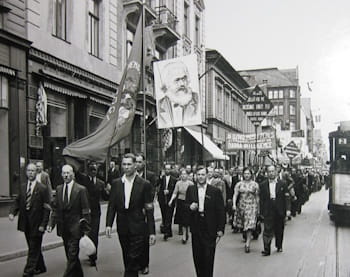
Vija (pronounced VEE-ya) Celmins was, with older sister Inta, born into a working-class family in Riga, Latvia, in 1938. Her father, Arturs, was a bricklayer, her mother, Milda, a homemaker and local child carer. Following the Soviet occupation of the country in 1940, the family fled to Germany in 1944 where they survived several months of incessant bombing by the Allies. At the end of World War II (1945) the family moved into UN refugee camps in Leipzig, Mannheim, and, finally, Esslingen am Neckar, in the Baden-Württemberg province. Celmins said on this period of continued displacement, "My biggest nightmare was losing hold of my mother's hand, and never seeing her again". In 1948, the Celmins family seized the opportunity to emigrate to the United States through the help of the Church World Service.
The Celmins spent their first three months in New York City. They were lodged in a hotel where the young Vija learnt her first words in English through the American comic books Arturs bought her to help pass the time. The family then moved to a permanent home in Indianapolis, Indiana (Celmins mused later,"It wasn't until I was ten years old and living in Indiana that I realized being in fear wasn't normal"). A Lutheran pastor helped her father find work as a carpenter, while her mother secured work as a laundress in a local hospital. When Celmins was 11, Inta (who was 19) contracted tuberculosis and spent most of the following three years in hospitals. Arturs and Milda showed little interest in their younger daughter ("my parents were like peasants - they had their own way of dealing with things" she said later) and Vija spent long hours alone, drawing and reading in the bedroom she shared with her absent sister. After a year or so, Vija had become fluent in English and had fully integrated into school life. Indeed, she became the school's star track and field athlete, and created the illustrations for its yearbooks.
Education and Early Training
In 1955, Celmins enrolled at the John Herron School of Art in Indianapolis. From there, she made frequent visits to New York where she took in the works of the Abstract Expressionists. In 1961, Celmins won a Fellowship to attend a Summer session at Yale University where she befriended artists Chuck Close and Brice Marden. Having graduated from Herron in 1962, Celmins spent the summer touring Europe (on a Heron grant) with her long-term boyfriend. Known only as Terry, Celmins has referred to him as "possibly the love of my life", and together they visited the major museums in Madrid, Paris, Rome, Florence and Berlin. At Madrid's Museo del Prado she became enraptured by the works of Velazquez ("the somberness of the paintings, the beautiful gray, blacks and pinks, [stayed] with me" she said later). Back in the US (in the fall of 1962), Celmins enrolled at University of California, Los Angeles (UCLA), while Terry moved to the University of New Mexico in Albuquerque (the young sweethearts maintained a long-distance relationship, but soon drifted apart, bringing to a close their five-year relationship).
Celmins relocated to Venice, Los Angeles, where she rented a dilapidated storefront property close to the beach. She had no bathroom or kitchen (she took showers at a friend's house and cooked on a portable electric hotplate). Celmins formed a close, platonic friendship with the artist, and future founder of the Light and Space movement, Doug Wheeler. She also became good friends with fellow students Ed Moses, Ken Price, and Tony Berlant, and with artist-cum-teacher Robert Irwin. Celmins explored a range of styles at UCLA, initially producing large, gestural paintings influenced by the likes of De Kooning and Pollock. However, she soon abandoned Abstract Expressionism on the grounds that "it was too decorative".
Celmins turned her attentions instead to everyday "dumb objects" (including her electric hotplate) which she rendered in a monotone minimalist style that carried echoes of the Italian still life painter, Giorgio Morandi. These works preceded her series of "gray paintings", some of which featured crashing World War II aircraft, that she copied from old newspaper photographs. This was also the height of the Vietnam War, and Celmins was a vocal participant in the student-led anti-war protests. However, her miniature burning house sculptures, House #1 and House #2 (1965), made with wood and a featuring a faux fox fur lining (the ginger tendrils of the fur signifying the flames) caused by aerial bombings, were, like her aircraft pictures, a reference to her childhood years in Germany during the allied bombings (rather than the war being waged currently in Vietnam).
Celmins was awarded her master's degree in fine art in 1965. She held her first solo exhibition a year later at the David Stuart Galleries in Los Angeles. Art historian Calvin Tomkins writes, "Noma Copley, the wife of the artist and collector William Copley, bought one of [her house sculptures] and Betty Asher, a leading Los Angeles collector of new work, bought the other. The Copley Foundation also gave Celmins its award for an outstanding artist". Celmins herself recalled, "[the award] was for two thousand dollars, which kept me going for months". She also took up part-time teaching posts in painting, drawing and anatomy, at California State College and the UC campus at Irvine. Celmins was married to the writer Peter Givler in 1968. The couple lived in Topanga Canyon, in Western Lost Angeles County, while Celmins maintained her Venice studio.
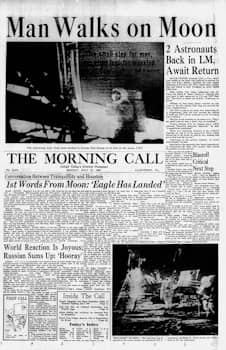
Between 1968 and 1977 Celmins focused mostly on pencil drawings of clouds, the lunar surface (based on photographs from the moon landing), and oceans. The latter were created from her own photographs, most of which were taken while she was walking her dog on and around Venice Pier. The graphite images of the ocean covered the whole of her picture surface and lacked any horizon or focal point. She exhibited her first oceans drawings in 1969, at the Riko Mizuno Gallery (Los Angeles) (she would stay with the gallery until 1983). Celmins had been introduced to Mizuno by the artist James Turrell, who was instantly won over by her beauty and charisma. Celmins cites Mizuno, in fact, as being responsible for her fascination with "all things Japanese" (including food, clothes, and the novels of Yukio Mishima). Celmins had enjoyed her teaching posts, but by the end of the decade her reputation had raised to such an extent (not least through an impressive number of positive press reviews) she was able to support herself on art sales alone.
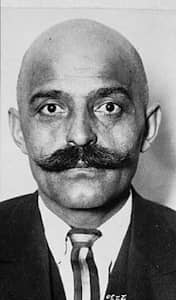
By the early 1970s Celmins was redrawing found pictures of galaxies and constellations, as well as desert imagery based on her own photographs. She visited (with her beloved dog, Lācīte) deserts in California and Nevada including Panamint Valley, Death Valley and the Mojave Desert. But while Celmins's career was in the sharp ascendency (her first solo museum show was held at the Whitney in 1973), her marriage was in tatters and ended formally in 1973. The breakup plunged Celmins into a state of deep depression and she joined an Oakland commune that followed the teachings of the Armenian guru, George Gurdjieff (1867-1949). Celmins started a new relationship with one of its members, an unnamed mathematics lecturer from Monterey. The couple soon abandoned the commune (Celmins said later, "It was just too much of 'everybody is asleep, and you are awake' kind of thing") and set up home in mountainous region of Big Sur in Central California. When the couple broke up in the late 1970s, Celmins returned to Los Angeles only to find (to her dismay) that her old studio had been leased to another artist (Celmins relocated to a new studio near Venice Boulevard).
This change of studio marked a turning point in Celmins's career. By the mid-1970s she had abandoned her ocean and desert drawings, and focused rather on rocks and stones that she had collected on trips to the barren Taos region of New Mexico. Tomkins writes, "Her stones were of varying shapes and sizes, none of them larger than a fist, and she made a bronze cast of each one and covered that with a base coat of automobile body paint. Jasper Johns's famous sculpture of two Ballantine Ale cans, cast in bronze and painted to match the originals, was very much on her mind. Celmins admired Johns, whom she met first at Riko Mizuno's gallery and then saw again at the Gemini gel print workshop, in Los Angeles, when she started making prints there in the early eighties. The fantastically intricate task of reproducing the eleven stones took five years [...] Working with the smallest brushes and acrylic paint, she matched the colors and every speck and marking on the found stones, so precisely that even she has trouble telling the original from the copy".
Mature Period

Celmins was the recipient of the prestigious Guggenheim Fellowship in 1981, and began her association with Gemini G.E.L., an artist's printmaking and sculpture workshop in Los Angeles. She produced a series of intaglio prints, including Constellation Uccello (1983), Alliance (1983), and Concentric Bearings (1984), through the workshop. Having arranged a "studio swap" with artist Barbara Kruger (Celmins's Venice Boulevard studio for Kruger's studio in Lower Manhattan), Celmins was roused by New York's "more ambitious" art scene and decamped permanently from West to East Coast. Once settled in New York, Celmins took up painting again (because, she said, "I wanted the work to carry more weight"). Tomkins writes, "Barrier, dated 1985-86, is the first major oil painting by Celmins since 1968 [...] It's large by her standards, six feet wide and just under six feet high, and it ushered in a long and magisterial series of night-sky paintings. Like her oceans, the night skies are without centers or boundaries, each one an unbroken field of white dots of various sizes, against a black background".
Moving into the 1990s, Celmins's painting became focused predominantly on the night sky. Having committed her celestial view to canvas, she took to the painstaking task of overlaying each individual star with a globule of liquid cement. As Tomkins explains, "She may repeat this process twenty times or more, sanding the entire surface, before she lays down the next layer of ivory black mixed with burnt umber, ultramarine blue, and sometimes a touch of white". A highpoint of the decade came in 1996 when Celmins accepted an American Academy of Arts and Letters Award in recognition for her career achievements.
Around the turn of the new millennium, Celmins (who was "getting sick of black paintings") produced the first of her Web series (1999-2006). Art critic Jeffrey Ryan writes, "These works show the lessons learnt from drawing galaxies with delicate lines stretched taut over dark expanses. They refer as much to the wonder of the natural world as to the slightly Gothic, conjuring up empty dust-moted rooms and eerie tales". In 2007, having happened upon a 19th century school writing slate in a secondhand store, Celmins commenced her three dimensional School Slates project. Over the subsequent years she collected several other examples from which she created meticulous facsimiles. Celmins exhibited these next to the original slates (in the manner she had done with her painted stones). During this period she also produced small simulacrum paintings of the covers (opened and face down) of Charles Darwin's On the Origin of Species (2008-10). The art critic Lisa Turvey referred to these works as "a two-dimensional rendering, made to look volumetric, of a three-dimensional object in a flattened state".
Since the mid-1960s, Celmins has been the subject of over 40 solo exhibitions. But the exhibition that brought her greatest pleasure was a 2014 retrospective at the Latvian National Museum of Art, in Riga. Although she had visited Latvia on a few occasions with her sister (Inta), the museum arranged a gala homecoming for the artist; one which was attended by many close and distant relatives (most of whom she had never met). On reaching her ninth decade, Celmins says, "I've been opening up a little, letting my hand show more. My hand isn't quite as steady, my mind is not as steady, my eyes are not as steady [but I'm still] allowing things to happen, hopefully". Today Celmins divides herself between a winter retreat in Mérida, Mexico, and New York City.
The Legacy of Vija Celmins
Celmins's decision to shun publicity has led publications like The Independent newspaper to label her "American art's best-kept secret". But within the contemporary art world, prominent individuals such as Max Hollein, director of New York's Metropolitan Museum of Art, cite her as "one of the most important artists of the last sixty years". He recognizes the fact that Celmins's beguiling images of ocean and desert surfaces, spider webs, and distant galaxies, invite the viewer to contemplate (and to perhaps reconsider) the visual textures of the natural world and our fragile place in this vast universe. Moreover, Celmins's works exemplifies the intricacies involved in her artmaking. She says, "if there is any meaning in art, it resides in the physical presence of a work".
The American Conceptual artist Allan McCollum echoed the sentiments of other next generation artists, including Portuguese-American interdisciplinary artist Célia Rocha, Northern Irish painter William McKeown, and Exeter-based Shaina Gates, when he stated, "I was hugely influenced by [Celmins] her love of duplication and the way she considered copying a kind of spiritual act". The art critic Lane Relyea summed up her career achievements thus: "Taken as a whole, her imagery can be thought to comprise a kind of halting still life, a homey, unassuming congregation of standard cultural and natural showpieces. Only Celmins has replaced the handicraft and silverware with photographs and electrical appliances, the food and drink with oceans and galaxies [...] With pencil and paintbrush in hand, Celmins flicks her wrist back and forth, creates a world, and waves goodbye".
Influences and Connections

- Célia Rocha
- William McKeown
- Shaina Gates
- Allan McCollum
Useful Resources on Vija Celmins
- Vija Celmins: To Fix the Image in MemoryOur PickBy Gary Garrels
- Vija Celmins & Gerhard Richter: Double VisionOur PickBy Brigitte Kölle
- Vija Celmins (Phaidon Contemporary Artist Series)Our PickBy Lane Relyea, Robert Gober, and Briony Fer
- Vija Celmins: Television and Disaster, 1964-1966By Franklin Sirmans and Michelle White
- The Prints of Vija CelminsBy Samantha Rippner
- Vija CelminsBy William Bartman and Chuck Close
 Ask The Art Story AI
Ask The Art Story AI